#Jesuite science
Text
Physics Curiosa. 1667
Gaspar Schott’s Physics Curiosa is a densely illustrated encyclopedia of animals some of which exist and others which are reported to exist or had once existed. Of the twelve books half are comprised of miraculous beings, many illustrated and explained by the creations of Angels, Specters, Demons, and un-natural magic. The second half is more marvels of nature, mostly existing exotic animals,…
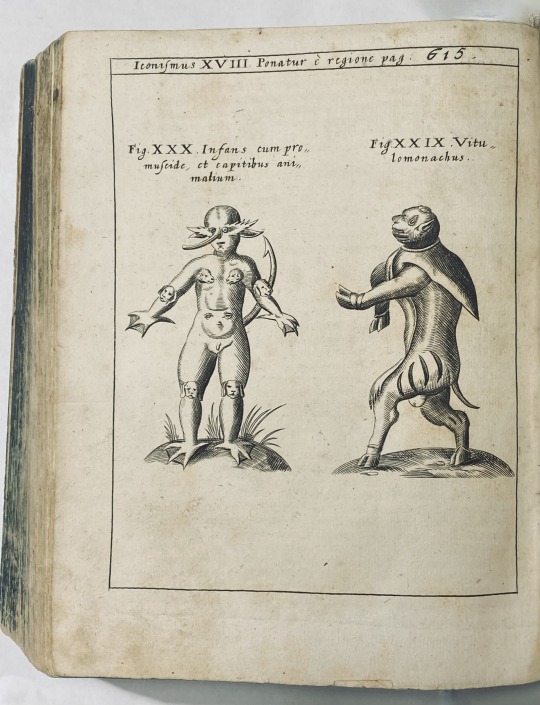
View On WordPress
#Artificial Magic#Centaur#Dragons#illustrated natural history#Imaginary beings#Jesuite science#Monstrous births#Natural curiosities
0 notes
Text
“[The Jesuits] had contributed to the development of pendulum clocks, pantographs, barometers, reflecting telescopes and microscopes, to scientific fields as various as magnetism, optics and electricity. They observed, in some cases before anyone else, the coloured bands on Jupiter's surface, the Andromeda nebula and Saturn's rings. They theorised about the circulation of the blood (independently of Harvey), the theoretical possibility of flight, the way the moon effected the tides, and the wave-like nature of light. Star maps of the southern hemisphere, symbolic logic, flood-control measures on the Po and Adige rivers, introducing plus and minus signs into Italian mathematics-all were typical Jesuit achievements, and scientists as influential as Fermat, Huygens, Leibniz and Newton were not alone in counting Jesuits among their most prized correspondents.”
- Jonathan Wright, The Jesuits: Missions, Myths and Histories (London: HarperCollins, 2004), 189.
14 notes
·
View notes
Photo

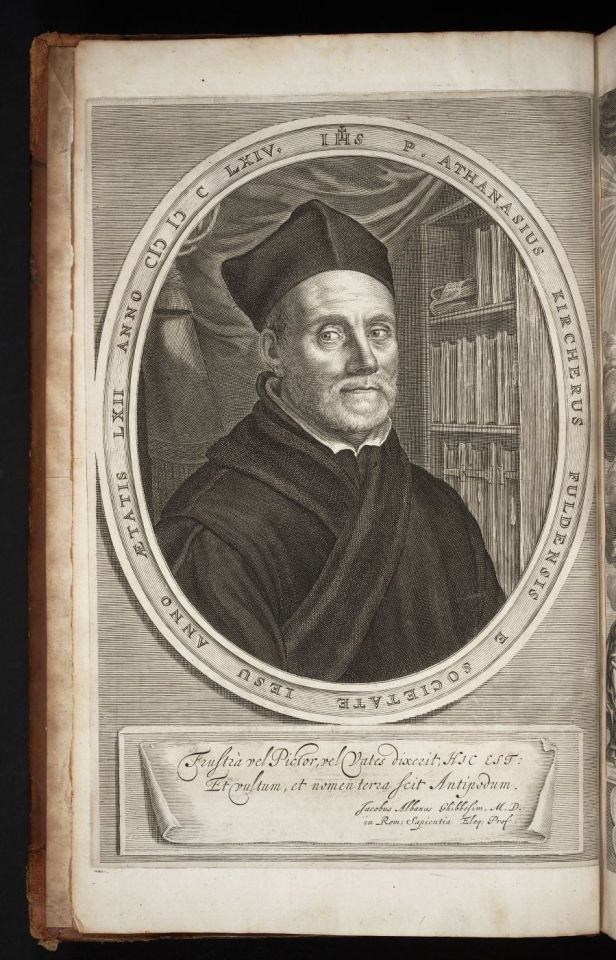





Athanasius Kircher – Scientist of the Day
Athanasius Kircher, A German Jesuit natural philosopher working in Rome, was born May 2, in 1601 or 1602, in Fulda in central Germany.
Learn more
#Athanasius Kircher#fossils#Jesuits#histsci#histSTM#17th century#history of science#Ashworth#Scientist of the Day
38 notes
·
View notes
Text
youtube
John Dee e a teia Iluminada | Live com André de Pierre e Claudio Suenaga | Lançamento da Enigmas 32
André de Pierre e Cláudio Suenaga falam sobre o polímata e ocultista John Dee, um dos fundadores da ciência moderna e do próprio mundo moderno, e o poder das sociedades em todos os tempos, a exercer uma influência significativa na esfera sociopolítica.
➡️ Canal de André de Pierre: https://www.youtube.com/@AndredePierre
➡️ Revista Enigmas: https://revistaenigmas.com.br/
➡️ Torne-se o meu Patrono no Patreon e tenha acesso a matéria completa sobre John Dee, bem como centenas de conteúdos exclusivos: https://www.patreon.com/posts/78137752
➡️ Ou inscreva-se gratuitamente e tenha acesso a todos os meus posts públicos: https://www.patreon.com/suenaga
➡️ Toda a minha rede aqui: https://linktr.ee/suenaga
➡️ E-mail: [email protected]
✅ Adquira "Encuentros cercanos de todo tipo. El caso Villas Boas y otras abducciones íntimas", meu primeiro livro traduzido em espanhol, na Amazon:
Amazon.com (envios a todo o mundo desde os EUA): https://amzn.to/3Lh93Lb
Amazon.es (envios a todo o mundo desde a Espanha): https://amzn.to/3LlMtBn
Amazon.co.uk (envios dentro do Reino Unido): https://www.amazon.co.uk/-/es/Cl%C3%A1udio-Tsuyoshi-Suenaga/dp/B0BW344XF1/
Amazon.de (envios dentro da Alemanha): https://www.amazon.de/-/es/Cl%C3%A1udio-Tsuyoshi-Suenaga/dp/B0BW344XF1/
Amazon.fr (envios dentro da França): https://www.amazon.fr/-/es/Cl%C3%A1udio-Tsuyoshi-Suenaga/dp/B0BW344XF1/
Amazon.it (envios dentro da Itália): https://www.amazon.it/-/es/Cl%C3%A1udio-Tsuyoshi-Suenaga/dp/B0BW344XF1/
Amazon.co.jp (envios dentro do Japão): https://www.amazon.co.jp/-/es/Cl%C3%A1udio-Tsuyoshi-Suenaga/dp/B0BW344XF1/
✅ Adquira aqui meu livro "As Raízes Hebraicas da Terra do Sol Nascente: O Povo Japonês Seria uma das Dez Tribos Perdidas de Israel?"
https://www.lojaenigmas.com.br/pre-venda-as-raizes-hebraicas-da-terra-do-sol-nascente-o-povo-japones-seria-uma-das-dez-tribos-perdidas-de-israel
✅ Adquira os meus livros em formato e-book em minha loja no Patreon: https://www.patreon.com/suenaga/shop
#conspiracies#conspiracy theories#secret society#illuminati#maçonaria#freemasons#jesuits#vaticano#vatican#revista#enigmas#historia#youtube#satanism#ocultismo#magia#queen elizabeth ii#magus#modern science#modern age#Youtube
2 notes
·
View notes
Text


The Jesuit Church, also known as the University Church, dedicated to the Assumption of Mary, Vienna, Austria Jesuitenkirche oder auch Universitätskirche, gewidmet Mariä Himmelfahrt, Wien, Österreich Église des Jésuites de Vienne ou Église de l'Université, dédiée à l'Assomption de la Bienheureuse Vierge Marie, Vienne, Autriche Церковь иезуитов или Университетская церковь переосвящена во имя Успения Девы Марии, Вена, Австрия
@
Campus Academy of the Austrian Academy of Sciences Since 2022, a new research mile stretches from the main building of the Austrian Academy of Sciences (OeAW) via Sonnenfelsgasse and Bäckerstraße to the former Postsparkasse. Campus Akademie der Österreichischen Akademie der Wissenschaften (ÖAW) Campus Académie de l'Académie autrichienne des sciences Кампус Академия Австрийской академии наук
#Jesuitenkirche#Церковь иезуитов#Église des Jésuites#Jesuit Church#Campus Akademie#Campus Academy#Campus Académie#Кампус Академия#Österreichische Akademie der Wissenschaften#ÖAW#Austrian Academy of Sciences#Académie autrichienne des sciences#Австрийская академия наук#2023#Vienna#Wien#Вена#Autriche#Австрия#Österreich#Austria#Vienne#Vídeň#Wiedeń#Bécs#Viedeň#1010#Innere Stadt#Sonnenfelsgasse#Bäckerstraße
2 notes
·
View notes
Text
Yes I love Sci-Fi, but as you can probably tell from my post I am also deeply fascinated with cosmology in general and the idea of exploring the stars is very much a passion for me. The following quote from Rev. Clifford Stevens in the America article above has me fascinated.
Priests stood with Columbus and Magellan on the journeys into the unknown, and with the Vikings, too, when they explored the unknown western ocean. Man stands now on the threshold of a far more breathtaking discovery, and so it is not unfitting for the theologian, symbolically or otherwise, to put on a space suit.
This has been a secret fantasy of mine. In reading some unusual Sci-Fi books that integrate Catholicism in future space explorations like "The Sparrow" series or the "Hyperion Cantos" I have dreamt of the moment where theologians can offer their ethical and spiritual insights to space explorers. Hopefully, we will be better at this than the colonial explorers of the 15th and 16th Century. But even then, we should recall the contributions that Montesinos, Claver, Las Casas, and the Jesuit-Guarani Mission had and recognize the need for these prophetic voices as we consider exploring the vastness of space.
I doubt that this will be my career, but hopefully, I can influence those who will take up this futuristic mantle.

0 notes
Text
It should be noted that this is an observation that has been made for centuries. Matteo Ricci described China as “atheistic” and by that he didn’t mean “they believe in False Religion” he meant “they don’t really care about religion and people openly admit they do these rituals and ceremonies out of a sense of tradition and not because they believe these gods are actually real”
which was actually a matter of importance because the typical Jesuit strategy for overseas missions was to emphasize commonalities between local religion and Catholicism and then point to Catholicism as being the more perfect/correct version of what people already believe (so like “hey we both agree the world was created by a god but don’t you think it makes more sense it was a monotheistic god because..” but that was not working at all in China because people didn’t care about questions of theology so instead Ricci switched things up to instead emphasize an cross-cultural exchange of secular knowledge such as science because it turns out talking about science was what actually helped him get his foot in the door in China because the people did not care about questions of “faith” or “god”
96 notes
·
View notes
Note
came across a post by astriiformes (astriiformes(.)tumblr(.)com/post/742882591316803584/hi-i-just-learned-about-the-scientific-revolution) that objected to Kuhn's theory of scientific revolution on the basis that they felt it leant in to the "great men of history" model. I never understood it this way, but I haven't read the book—I thought it was more about explaining the lag between accumulation of evidence that goes against the current paradigm and full paradigm shift. thoughts?
kuhn's model of 'paradigm shifts' is certainly prone to inviting 'great man' explanations of scientific developments. i would even go further, and say that this is due to a fundamental issue in kuhn's methodology, which is a tendency toward idealist analysis that fails to consider material and sociological factors. astriiformes points out that these days, kuhn is more popular with economists and political scientists than with practicing historians of science; this is true and not a coincidence.
astriiformes also walks through a valuable line of objection to kuhn, which is that the scientists we tend to credit with having made singlehanded discoveries were in fact usually embedded in vibrant scientific communities and ongoing debates, and were influenced by their contemporaries as well as their intellectual forebears. this is all true. another critical angle to interrogate here, and one where the Great Man often pops up again, is in kuhn's version of how scientific ideas are actually adopted: in other words, how he considers a 'paradigm shift' to actually occur, even once we assume the idea in question has already been formulated. let me chuck a few case studies at you because it's easier than talking in generalities.
for much of the 20th century, the 'standard story' of galileo's trial and imprisonment was that, having dared to become a lone voice defending heliocentrism, he was made a martyr to truth by the church, which was threatened on theological grounds. however, in the last several decades historians of science have studied much more seriously the patronage networks of renaissance italy: the structure of funding and epistemological authority whereby a scientist like galileo secured money, university or court positions, and respect by gaining mutually beneficial relationships with various nobles and other wealthy people. galileo had defended heliocentrism prior to the church's crackdown on him and his work; so had certain other astronomers. although it's true the church had theological objections to what galileo was saying, they were pretty much forced to tolerate him as long as he had sufficient patronage protection: wealthy, powerful people using their social clout to defend him. but this fragile truce was shattered when galileo lost the support of certain of his patrons, particularly some jesuits, in the early 1630s and thus became a much more vulnerable target of church censorship. it was only at this point that the church placed him on trial and then eventually under house arrest, and forced to recant.
evolutionary ('transmutationist') ideas were not new by the time darwin published the 'origin' in 1859. most french biologists at this time supported some variant of transmutationist ideas, and even in britain, transmutation of species had long been hotly discussed in the edinburgh medical schools in particular. the challenge for the wealthier london gentleman-naturalist set was that transmutationism had previously been associated with radical, materialist, atheist politics (this was precisely what appealed for many in edinburgh), and although evolutionary ideas had circulated in the wider reading public, these had typically been carefully framed to remain compatible with dominant anglican morals (eg, robert chambers's 'vestiges' of 1844). so, why were charles darwin's ideas accepted where others had been suppressed, ignored, or mired in controversy? a few reasons: again, a strong patronage network and powerful social connections (familial and personal); also, darwin very consciously avoided talking about human descent in 1859 (he did not do so until 1871's 'descent of man', which remains less widely read to this day) and avoided open avowal of materialism or atheism in his published works. furthermore, despite what lay histories may suggest nowadays, darwin's ideas were not embraced immediately or uncritically. they circulated piecemeal, with the help of 'popularisers' like haeckel and th huxley whose teachings often varied pretty widely from what darwin actually said or thought. and, prior to the 'modern synthesis' unifying 'darwinian' evolution with mendelian genetics, one of the most common objections to darwin's ideas was that he had provided proof of no actual mechanism of heredity, which resulted in a retrospectively fascinating period of anglo and french scientific writing between about 1890–1940 that often circulated the claim that darwin had been proven embarrassingly wrong, and it was jean-baptiste lamarck who had instead been vindicated by the biologists of the middle victorian era.
louis pasteur has historically been credited with ushering out the last vestiges of 'miasmatic' and 'environmentalist' theories of disease in france, and replacing them with good solid bacteriology. this is simply a misrepresentation of scientific beliefs among the lay public, technical experts like public health officials, and even working scientists under the third republic. because hygienists and sanitation engineers had spent much of the 19th century creating professional prestige for themselves as managers of the insalubrious environmental factors plaguing particularly the urban poor, you can imagine they were not generally thrilled at the proposition that someone had actually confirmed the existence of a microscopic 'germ' of disease, a foreign entity that could be studied and eradicated by a laboratory scientist with entirely different credentials and training. so, as it became clear that the actual eradication part was still a challenge, and that disease risk did not strike all people or demographics equally, french hygienists by and large simply altered their rhetoric a little. yes, germs existed—in fact, clearly, these were what the hygienists had been protecting people from all along by encouraging cleaner air, open spaces, gymnastic exercise, &c! this is the root of what's now known in the historical literature as the 'sanitary-bacteriological synthesis'—not an overturning of an old 'environmentalist' paradigm for a modern bacteriological one, but rather a melding of the two that enfolded pasteur's and koch's discoveries whilst still shoring up the professional authority of the hygienists and sanitarians.
in all three of these cases you can see how a strictly kuhnian analysis of 'paradigm shifts' over-emphasises the role of the Great Man (here in his guise as Genius Scientist) because it overlooks critical factors like the social and professional networks that actually allow knowledge to spread, and the professional and pecuniary interests that motivate people, consciously or not, when they evaluate new theories or ideas. galileo did not suffer from 'failing' to spark a paradigm shift, any more than darwin singlehandedly succeeded; their ideas circulated, mutated, and provoked on the strength of relationships as much as pure cerebral Theory. pasteur's claims likely could not have achieved the renown they did, had they not been helped along by hygienists who saw in them a change to re-form and reinforce their own profession and authority.
kuhn's work was an important departure from earlier positivist, largely teleological histories of science: the 'paradigm shift' allowed people to talk about massive and notable changes in science without having to accede to a model that assumed constant, linear progress. in this sense, much of today's history of science (still a comparatively immature and evolving field!) belongs to a citational lineage that will eventually pop up with kuhn's name. but, methodologically, kuhn leaves a lot to be desired, because his analysis is generally founded in an intellectual history that configures Science as a world of disembodied ideas unburdened by social, material, and economic considerations and practices.
52 notes
·
View notes
Text
THIS DAY IN GAY HISTORY
based on: The White Crane Institute's 'Gay Wisdom', Gay Birthdays, Gay For Today, Famous GLBT, glbt-Gay Encylopedia, Today in Gay History, Wikipedia, and more … February 8


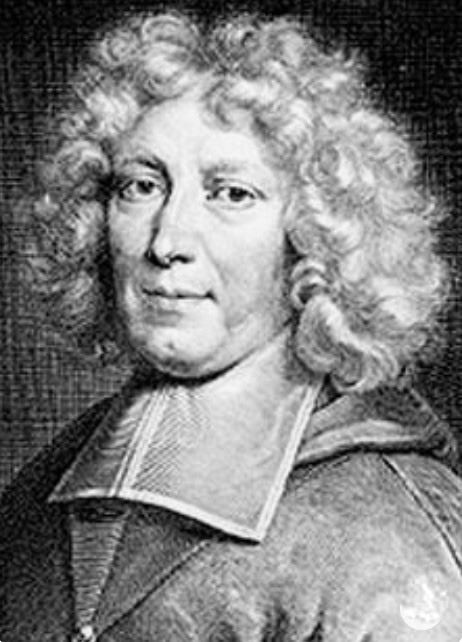
1630 – One of the most learned men of his age, Pierre-Daniel Huet was a polymath—a philosopher, a scientist, a novelist, a cleric, and a member of the Académie française.
Pierre-Daniel Huet was born in the city of Caen in Normandy.At the age of eight he was sent to study with the Jesuits at the nearby Collège du Mont, where he immediately proved himself a brilliant student. He excelled in both sciences and letters, quickly learning Latin and Greek and also developing an enduring love for French literature, especially poetry.
In his early twenties he traveled north, first to Holland and then on to Sweden. In the Netherlands he met and had a love affair with Alexandre Morus. The two young men both had literary aspirations and encouraged each other in efforts to write poetry—enjoying some success. Indeed, Morus later went on to establish a modest reputation as a writer of Latin poetry.
Arriving in Sweden in 1652, Huet was received by Queen Christina, known as the "Minerva of the North" for her erudition and enthusiastic patronage of scholarship. Huet also enjoyed a very successful career at the French court. King Louis XIV granted him a pension in 1663. In 1670 Huet became the tutor of the king's son, the dauphin Louis, a post for which he was exceptionally well qualified.
Huet had founded an academy of sciences in Caen in 1661. There he pursued his numerous interests, studying and writing on anatomy, zoology, astronomy, and chemistry, as well as mathematics.
Huet was the author of the novel Le faux Ynca, ou Diane de Castro, probably written around 1667 but only published posthumously in 1728. He also wrote Traité de l'origine des Romans (Treatise of the origin of novels) (1666), the first history of the novel in Europe.
Noted as a philologist, Huet not only wrote poetry in Latin and Greek but also made numerous translations of and commentaries on ancient texts. His projects included Notae ad Anthologiam epigrammatum Graecorum (Notes on an anthology of epigrams of the Greeks) (1700), an annotated collection of mostly pederastic verse.
Huet wanted a career in the church from his earliest years, but it was only in 1671 that he received minor orders. He was named abbot in 1678 and seven years later was chosen by the king to be bishop of Soissons. Pope Innocent XI, who, as Philippe-Joseph Salazar puts it, "had no time for sodomites. . . nor for humanists who were too well versed in canon law," refused to confirm him in the post.
Under the succeeding pope, Alexander VIII, Huet was created bishop of Avranches in 1689. After ten years in that position he retired to the Jesuits' house in the Faubourg Saint-Jacques (a neighborhood that, as it happens, is now a center of Paris's gay community). Huet spent his last two decades in the Jesuits' facility, where, as Salazar states, "he held court, surrounded by younger men who seem to have helped him pass sweet old years, a seventeenth-century André Gide."


1828 – Jules Verne, born (d.1905); a French author who pioneered the science-fiction genre, he is best known for novels such as Journey to the Center of The Earth (1864), 20,000 Leagues Under the Sea (1870), and Around the World in 80 Days (1873). Verne wrote about space, air and underwater travel before air travel and practical submarines were invented, and before practical means of space travel had been devised. He is the third most translated author in the world, according to Index Translationum. Some of his books have been made into films. Verne, along with H.G. Wells, is often popularly referred to as the "Father of Science Fiction".
Some historians and literary critics have theorized certain pederastic elements in the life and work of the writer. Jean Paulhan describes two main themes identified in Verne's work. First, that "in life we must, little by little, substitute in place of our natural father an older and better man than ourselves," and later that we will need likewise to substitute, in place of our wife, a male friend worthy of esteem and admiration. The second theme is that "the entire opus of Jules Verne has, as its purpose and secret, pederasty." His theme is picked up by a later work, that of Marc Soriano, who sees elements of "latent homosexuality, sublimated pederasty, and misogyny" in Verne's writings.
Verne's close and lasting friendship with Aristide Briand, whom he met in Nantes in 1876 when the young man was a fifteen year old lycéen and schoolmate of his son Michel, is also cited as a possible example of his attraction to youths. He frequently picked up Briand from the lycée and brought him to his house, and also used him as a character in A Long Vacation. Michel Larivière, in his Homosexuels et bisexuels célèbres points out an almost universal theme in the novels of "an older and more experienced man who offers support and affection to a young and very handsome boy." Examples of such pairs are Lord Glevanan with the young Robert Grant, in The Children of Captain Grant, the dashing Pencroft with the fifteen year old Herbert Brown, the "brave boy" whom he "loved as if he had been his own child," in The Mysterious Island, and Kaw-djer and Halg in The Survivors of the 'Jonathan,' of whose love he writes:
"Halg was the only one able to move this disaffected man, who knew no love other than the one he felt for a child... Is it because they have some dim notion of this disproportion that, despite its resplendent beauty, such an emotion astonishes more than it charms other men, and seems inhuman to them, even though it is above them?"
Another indication of Verne's pederastic or homosexual leanings has been suggested in his purported lack of tolerance for women, who are largely absent from his works, or reduced to insignificance, or subjected to a ferocious misogyny. Likewise, the incident of the attack by his nephew, with whom he had entertained a long term and affectionate relationship, and which was hushed up by the local press, is held to be indicative of either a sexual relationship gone bad, or else an attack of jealousy at the arrival of a new love interest.
In a recent biography, his translator, William Butcher, in presenting evidence for Verne's homosexual leanings, also cites the fact that he only fathered one child, spent large periods of his life and both major journeys in the company of his close friend, the composer Aristide Hignard who was probably homosexual himself, and spiced up his letters to his editor, Pierre-Jules Hetzel, with double-entendres about oral sex.

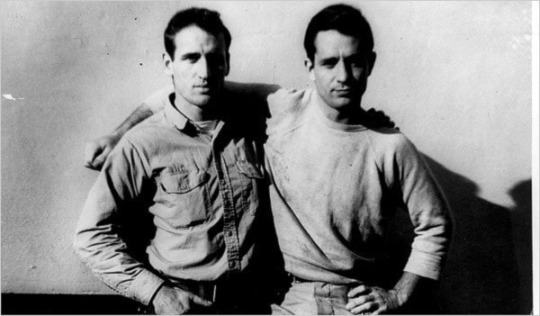
Neal Cassady (left) and Jack Kerouac
1926 – The American writer Neal Cassady was born on this date (d.1968). He was a major figure of the Beat Generation of the 1950s and the psychedelic movement of the 1960s. He served as the model for the character Dean Moriarty in Jack Kerouac's novel On the Road.
As a youth, Cassady was repeatedly involved in petty crime. He was arrested for car theft when he was 14, for shoplifting and car theft when he was 15, and for car theft and fencing when he was 16.
In 1941, the 15-year old Cassady met Justin W. Brierly, a prominent Denver educator. Brierly was well known as a mentor of promising young men, and, impressed by Cassady's intelligence, Brierly took an active role in Cassady's life over the next few years. He helped admit Cassady to East High School where he taught, encouraged and supervised his reading, and found employment for him. Cassady continued his criminal activities, however, and was repeatedly arrested from 1942 to 1944; on at least one of these occasions, he was released by law enforcement into Brierly's safekeeping.
In June 1944, Cassady was arrested for receipt of stolen property, and served eleven months of a one-year prison sentence. He and Brierly actively exchanged letters during this period even through Cassady's intermittent incarcerations; these represent Cassady's earliest surviving letters. Brierly, apparently a closeted homosexual, is also believed to have been responsible for Cassady's first homosexual experience.
In October 1945, after being released from prison, he married the fifteen-year-old LuAnne Henderson. In 1947, Cassady and his wife moved to New York City, where they met Jack Kerouac and Allen Ginsberg through Hal Chase, another protégé of Justin W. Brierly's. He soon became friends with them and their acquaintances, some of whom later became members of the Beat Generation. He had a sexual relationship with Ginsberg that lasted off and on for the next twenty years, and he traveled cross-country with both Kerouac and Ginsberg on multiple occasions.
The volume of Ginsberg's writings to and about Cassady is enormous. He dedicated poems to Cassady and his letters are filled with his longing for Cassady.
Cassady first met author Ken Kesey during the summer of 1962, eventually becoming one of the Merry Pranksters, a group who formed around Kesey in 1964 and were proponents of the use of psychedelic drugs. During 1964, he served as the main driver of the bus Furthur, which was immortalized by Tom Wolfe's book, The Electric Kool-Aid Acid Test. Cassady was also the inspiration for the main character of Ken Kesey's novel One Flew Over the Cuckoo's Nest.

On February 3, 1968, Cassady attended a wedding party in San Miguel de Allende, Guanajuato, Mexico. Large quantities of drugs were consumed by Cassady and other guests. After the party he went walking along a railroad track to reach the next town, but passed out in the cold and rainy night wearing nothing but a T-shirt and jeans. In the morning, he was found in a coma by the track. Cassady was then transported to the closest hospital, where he died a few hours later on February 4, four days short of his forty-second birthday.
Cassady's autobiographical novel The First Third was published posthumously in 1971, three years after his death. His complete surviving letters are published in Grace Beats Karma: Letters from Prison (Blast, 1993) and Neal Cassady: Collected Letters, 1944-1967 (Penguin, 2007).


1931 – The American film actor James Dean was born on this date (d.1955). Dean's status as a cultural icon is best embodied in the title of his most celebrated film, Rebel Without a Cause, in which he starred as troubled high school rebel Jim Stark. The other two roles that defined his star power were as the awkward loner Cal Trask in East of Eden, and as the surly, racist farmer Jett Rink in Giant. His enduring fame and popularity rests on only three films, his entire starring output. It's interesting to note one of his rare turns on Broadway included acting in André Gide's��The Immoralist.
Today, Dean is often considered an icon because of his "experimental" take on life, which included what some refer to as an "ambivalent sexuality." There have been several accounts of Dean's sexual relationships with both men and women. William Bast was one of Dean's closest friends, a fact acknowledged by Dean's family. Dean's first biographer (1956), Bast was his roommate at UCLA and later in New York, and knew Dean throughout the last five years of his life. Bast has recently published a revealing update of his first book, in which, after years of successfully dodging the question as to whether he and Dean were sexually involved, he finally admitted that they were. In this second book Bast describes the difficult circumstances of their involvement and also deals frankly with some of Dean's other Gay relationships, notably the actor's friendship with Rogers Brackett, the influential producer of radio dramas who encouraged Dean in his career and provided him with useful professional contacts.
Journalist Joe Hyams suggests that any sexual acts Dean might have involved himself in appear to have been strictly "for trade," as a means of advancing his career. Val Holley notes that, according to Hollywood biographer Lawrence J. Quirk, Gay Hollywood columnist Mike Connolly "would put the make on the most prominent young actors, including Robert Francis, Guy Madison, Anthony Perkins, Nick Adams and James Dean."

However, the "trade only" notion is debated by Bast and other Dean biographers. Indeed, aside from Bast's account of his own relationship with Dean, Dean's fellow biker and "Night Watch" member John Gilmore claims he and Dean "experimented" sexually on one occasion in New York, and it is difficult to see how Dean, then already in his twenties, would have viewed this as a "trade" means of advancing his career.
In his Natalie Wood biography, Gavin Lambert, himself part of the Hollywood Gay circles of the 50s and 60s, describes Dean as being Bisexual. Rebel director Nicholas Ray has also gone on record to say that Dean was Bisexual. Consequently, Robert Aldrich and Garry Wotherspoon's book Who's Who in Contemporary Gay and Lesbian History: From World War II to the Present Day (2001) includes an entry on James Dean.
Dean avoided the draft by registering as a "homosexual," then classified by the US government as a mental disorder. When questioned about his orientation, he is reported to have said, "Well, I'm certainly not going through life with one hand tied behind my back."

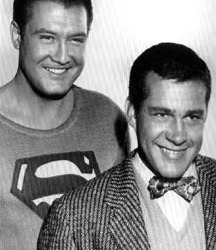
Jack Larson with George "Superman" Reeves
1933 – The actor, librettist, screenwriter and producer Jack Larson was born on this date (d.2015). He was raised in Pasadena, California and is best known for his portrayal of Jimmy Olsen in the TV series Adventures of Superman.

Jimmy and Clark
He has said that he found the role of the cub reporter to be a handicap due to its typecasting of him. He did not do much acting after that, mostly behind-the-scenes work — writing and production.
He was a guest actor on the series Lois and Clark as an aged Jimmy Olsen in the episode 'Brutal Youth', first broadcast in 1996. He had also appeared in an early episode of the TV series, Superboy.
He also had a quick cameo in an American Express Card commercial featuring Jerry Seinfeld and an animated Superman, (directed by David Kellogg).
In 2006, he appeared in Bryan Singer's film Superman Returns in a cameo role as "Bo the Bartender"; it was rumored prior to the film's release that his role would actually be Suicide Slum resident and Superman fan, Bibbo Bibbowski, a supporting character from the modern Superman comics. In one of Larson's Superman Returns scenes, where characters celebrate Superman's rescue of a plane, his character is shown wearing a bow tie in the style of Jimmy Olsen and hugging the film's incarnation of Jimmy Olsen played by Sam Huntington.
As a writer, Larson wrote the libretto to the opera Lord Byron to music by Virgil Thomson. Larson was the life-partner of director James Bridges. Their relationship lasted 35 years until Bridges' death on June 6, 1993. Prior to that, Larson was the companion of the acting legend Montgomery Clift.
He died on September 20, 2015 at the age of 87.

1945 – France: The administration of General Charles de Gaulle decides to maintain the Vichy government’s decree establishing a discriminatory age of consent for same-sex acts. (straight was 15yo & same-sex was 21 !!)


1951 – Today's the birthday of Rosario Crocetta, the former mayor of the Sicilian city of Gela, and the current President of Sicily. He was the first openly gay mayor in Italy when he became mayor of Gela in 2003. He became President of Sicily in 2012. Crocetta has received death threats in the face of his anti-mafia corruption crusades.Throughout his political career Crocetta has been a forthright proponent of the fight against organized crime in Sicily. Consequently, he has been the target of several Mafia attacks.
In 2003, a plot to kill Crocetta during the patronal feast of the Immaculate Conception involving a Lithuanian killer was thwarted by the local Carabinieri. After that episode, Crocetta was placed under security.
In 2008, a failed plan to kill Crocetta was made public by the district attorney of Caltanissetta; as a result, Crocetta was immediately placed under tighter security.
In 2010, a new assassination plot against Crocetta was thwarted, and five people affiliated with the local Mafia were arrested.

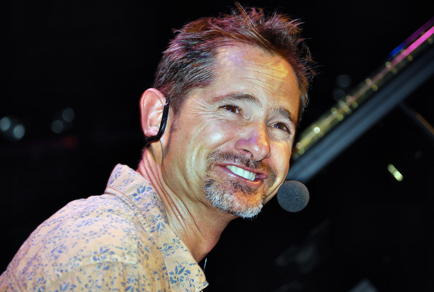
1963 – Joshua Kadison, born in Los Angeles, California, is an American singer-songwriter, pianist, and writer. He is perhaps best known for the Top 40 hits "Jessie" and "Beautiful in My Eyes" from his debut album Painted Desert Serenade. He is the son of actress Gloria Castillo, who was the inspiration behind his song "Mama's Arms."
According to an early press release by EMI, "His maverick ways paid off in 1993 when EMI released his self-penned debut Painted Desert Serenade, a collection of introspective story songs including the break-through single "Jessie" and "When A Woman Cries," already covered by legends Joe Cocker and Smokey Robinson. "I was so used to being outside of whatever was going on that I didn't even think I'd get a record deal, much less have my songs played on the radio." This, from the young man who received the BMI Award for one of the most played songs of 1994. His international hit "Beautiful in My Eyes" is often played at weddings and peaked at #19 in the U.S. Billboard charts.
His second album, Delilah Blue, was less commercially successful. His collection of songs were closer to sonic novels than the ballads featured in his first album; he used John Steinbeck's book The Pearl as inspiration for a song of the same name. The single "Take it on Faith" failed to reach the Billboard Top 10, and shortly after, EMI voided its contract with Kadison.
In 1998, he published his book 17 Ways To Eat A Mango: A Discovered Journal Of Life On An Island Of Miracles and the 5-track-album Saturday Night In Storyville on his own label Storyville Records, selling it predominantly from his website. It was well received in Germany, where he continues to have a huge following. In 1999 he released another album via his website called "Troubador In A Timequake," which was the first CD to include "My Father's Son." He is quoted to have said that it was a song written about his father, Ellis Kadison, who had recently died.
Shortly after, he signed a new deal with EMI Germany and his album Vanishing America was released. The album, released in May 2001, dealt with his disillusionment with the lost values of America. The album was a collection of songs that told stories about people not realizing their own beauty and full potential. Ironically, the album was never distributed in the United States.
In 2005, Kadison relaunched his career on his self-run website "Radio Humanity." He later bought back his previous website address and re-launched it. The Venice Beach Sessions was released as a download-only album in two parts, including a selection titled "Over The Sad Songs;" this was thought to be inspired by his recently dissolved relationship. Kadison has long been openly bisexual, which he once made mention of on his website's forum. The discussion which ensued caused him to shut down the site for some time before it was eventually relaunched. His sexuality does not seem to have affected his popularity and sales one way or the other, and certainly has not diminished either.


1975 – Jonah Blechman is an American actor. He has appeared in This Boy's Life with Leonardo DiCaprio and stars in Another Gay Movie alongside Jonathan Chase and Michael Carbonaro, and the sequel Another Gay Sequel: Gays Gone Wild!.
He is probably most known for an infamous kiss with Leonardo DiCaprio in the film This Boy’s Life.
Jonah Blechman's acting career first began when he was just 16 years old. His career began with roles in "The Commish" (1991-95) and "Walker, Texas Ranger" (CBS, 1992-2001). He also appeared in the TV movie "Empty Cradle" (ABC, 1993-94).
Following the release of Another Gay Movie, Blechman came out as gay


Jim Verraros (dark hair) and Bill Brennan
1983 – Today's the birthday of American singer, songwriter and actor Jim Verraros, born in Chicago, Illinois as James Verraros. Both his parents are deaf.
The responsibility of having to interpret for his parents led Verraros to relating more with people older than him, than those his own age. He discovered that he is gay when he was around twelve or thirteen years old, and his sexuality led to him being bullied during middle school. High school marked an improvement for him - he became active in theater and went on to attend Monmouth College on a theater scholarship.
Verraros was a participant in the first season of the American broadcast of American Idol (2002) and starred in the independent Gay film Eating Out (2004).
Prior to competing on American Idol, Verraros kept an online journal, in which he was open about being gay. The Advocate, an American LGBT-interest magazine, discovered this journal and contacted Fox with a request to interview Verraros.
Verraros quickly became a celebrity in the American Gay press because of a controversy that erupted when Fox Broadcasting Company made him remove Gay-related comments from his network-sponsored American Idol web site in the summer of 2002. However, Jim Verraros later stated that "it wasn't because I was gay. It was because they thought I was trying to gain more votes and have that little extra edge." While Verraros was out to fellow contestants and Idol employees, he did not mention his homosexuality on air. Following the end of the show and the subsequent tour, Verraros came out publicly in an article in The Advocate.
In 2005, Verraros met enterpreneur Bill Brennan through Myspace. After learning that they only lived twenty minutes away from each other, the two of them decided to meet in person. Four years later, on September 6, 2009, they married each other in a very small ceremony in their home state of Illinois – despite gay marriage being illegal there. They made it legal on July 24, 2011 in New York.

1990 – US Senate passes hate-crimes statistics act, requiring the federal government to compile data on hate crimes against gays and lesbians. It’s the first US law that recognizes gays and lesbians.

1994 – The European Parliament, meeting in Strasbourg, approves a resolution initiated by Claudia Roth, representing Germany’s Green Party, that affirms a broadly defined gay and lesbian rights agenda, including the right to marry.


25 notes
·
View notes
Text
Two huge Books by Gaspar Schott
Physica Curiosa, Sive Mirabilia Naturæ Et Artis Libris XII. Comprehensa, Quibus pleraq;, quæ de Angelis, Dæmonibus, Hominibus, Spectris, Energumenis, Monstris, Portentis, Animalibus, Meteoris.
and Technica curiosa, sive Mirabilia artis, libris XII
“Gaspar Schott, German physicist, born 5 February, 1608, at Konigshofen; died 12 or 22 May, 1666, at Augsburg. He entered the Society of Jesus 20…
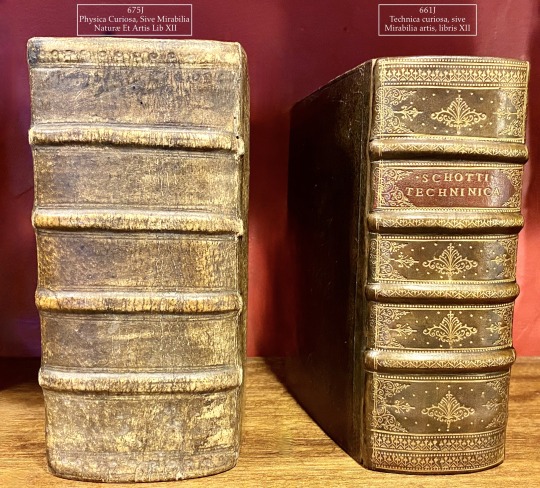
View On WordPress
#Artificial Magic#Centaur#Dragons#early printed books#Jesuit#Jesuit Science#Kircher#mechanics#Monstrous births Imaginary beings#Natural history#Otto Van Guericke#Pneumatics#Vaccume
2 notes
·
View notes
Text
“Several of the great Jesuit scientists also performed the enormously valuable task of recording their data in massive encyclopedias, which played a crucial role in spreading scientific research throughout the scholarly community. "If scientific collaboration was one of the outgrowths of the scientific revolution," says historian William Ashworth, "the Jesuits deserve a large share of the credit.”
The Jesuits also boasted a great many extraordinary mathematicians who made a number of important contributions to their discipline. When Charles Bossut, one of the first historians of mathematics, compiled a list of the most eminent mathematicians from 900 B.C. through 1800 A.D., 16 of the 303 people he listed were Jesuits. That figure-amounting to a full 5 percent of the greatest mathematicians over a span of 2,700 years-becomes still more impressive when we recall that the Jesuits existed for only two of those twenty-seven centuries! In addition, some thirty-five craters on the moon are named for Jesuit scientists and mathematicians.”
- Thomas E. Woods Jr., Ph.D., “The Church and Science,” How the Catholic Church Built Western Civilization
3 notes
·
View notes
Text




Roberto Bellarmine – Scientist of the Day
Roberto Bellarmino, an Italian Jesuit and Cardinal, was born Oct. 4, 1542.
read more...
#Roberto Bellarmino#Bellarmine#Jesuits#religion and science#Galileo#histsci#histSTM#17th century#history of science#Ashworth#Scientist of the Day
11 notes
·
View notes
Text
Below are 10 articles randomly chosen from Wikipedia's Featured Articles list. Brief descriptions and links are below the cut.
Bride of Frankenstein is a 1935 American science fiction horror film, and the first sequel to Universal Pictures' 1931 film Frankenstein. As with the first film, Bride of Frankenstein was directed by James Whale starring Boris Karloff as the Monster and Colin Clive as Dr. Frankenstein. The sequel features Elsa Lanchester in the dual role of Mary Shelley and the bride.
Chew Stoke is a small village and civil parish in the affluent Chew Valley, in Somerset, England, about 8 miles (13 km) south of Bristol and 10 miles north of Wells. It is at the northern edge of the Mendip Hills, a region designated by the United Kingdom as an Area of Outstanding Natural Beauty, and is within the Bristol and Bath green belt.
David Hillhouse Buel Jr. (July 19, 1862 – May 23, 1923) was an American priest who served as the president of Georgetown University. A Catholic priest and Jesuit for much of his life, he later left the Jesuit order to marry, and subsequently left the Catholic Church to become an Episcopal priest.
Denbies is a large estate to the northwest of Dorking in Surrey, England. A farmhouse and surrounding land originally owned by John Denby was purchased in 1734 by Jonathan Tyers, the proprietor of Vauxhall Gardens in London, and converted into a weekend retreat. The house he built appears to have been of little architectural significance, but the Gothic garden he developed in the grounds on the theme of death achieved some notoriety, despite being short-lived.
Courbet was the lead ship of her class of four dreadnought battleships, the first ones built for the French Navy. She was completed shortly before the start of World War I in August 1914.
The ketogenic diet is a high-fat, adequate-protein, low-carbohydrate dietary therapy that in conventional medicine is used mainly to treat hard-to-control (refractory) epilepsy in children. The diet forces the body to burn fats rather than carbohydrates.
The football match between Manchester United and Ipswich Town played at Old Trafford, Manchester, on 4 March 1995 as part of the 1994–95 FA Premier League finished in a 9–0 victory for the home team. The result stands as the joint record, with Southampton having subsequently lost by the same scoreline at home to Leicester City in 2019 and away at Manchester United in 2021, while Bournemouth also lost 9–0 to Liverpool in 2022.
M-185 is a state trunkline highway in the U.S. state of Michigan that circles Mackinac Island, a popular tourist destination on the Lake Huron side of the Straits of Mackinac, along the island's shoreline. A narrow paved road of 8.004 miles (12.881 km), it offers scenic views of the straits that divide the Upper and the Lower peninsulas of Michigan and Lakes Huron and Michigan.
Santa María de Óvila is a former Cistercian monastery built in Spain beginning in 1181 on the Tagus River near Trillo, Guadalajara, about 90 miles (140 km) northeast of Madrid. During prosperous times over the next four centuries, construction projects expanded and improved the small monastery. Its fortunes declined significantly in the 18th century, and in 1835 it was confiscated by the Spanish government and sold to private owners who used its buildings to shelter farm animals.
Sarcoscypha coccinea, commonly known as the scarlet elf cup, or the scarlet cup, is a species of fungus in the family Sarcoscyphaceae of the order Pezizales. The fungus, widely distributed in the Northern Hemisphere, has been found in Africa, Asia, Europe, North and South America, and Australia.
9 notes
·
View notes
Text



Campus Academy of the Austrian Academy of Sciences
Since 2022, a new research mile stretches from the main building of the Austrian Academy of Sciences (OeAW) via Sonnenfelsgasse and Bäckerstraße to the former Postsparkasse.
Campus Akademie der Österreichischen Akademie der Wissenschaften (ÖAW)
Campus Académie de l'Académie autrichienne des sciences
Кампус Академия Австрийской академии наук
The Jesuit Church, also known as the University Church, dedicated to the Assumption of Mary, Vienna, Austria
Jesuitenkirche oder auch Universitätskirche, gewidmet Mariä Himmelfahrt, Wien, Österreich
Église des Jésuites de Vienne ou Église de l'Université, dédiée à l'Assomption de la Bienheureuse Vierge Marie, Vienne, Autriche
Церковь иезуитов или Университетская церковь переосвящена во имя Успения Девы Марии, Вена, Австрия
#Campus Akademie#Campus Academy#Campus Académie#Кампус Академия#Österreichische Akademie der Wissenschaften#ÖAW#Austrian Academy of Sciences#Académie autrichienne des sciences#Австрийская академия наук#2022#Jesuit Church#Jesuitenkirche#Церковь иезуитов#Église des Jésuites#Vienna#Wien#Вена#Autriche#Австрия#Österreich#Austria#Vienne#Vídeň#Wiedeń#Bécs#Viedeň#1010#Innere Stadt#Sonnenfelsgasse#Bäckerstraße
1 note
·
View note
Text
140 pages into The Sparrow and i'm loving it. so far i can say this book seems tailor-made for me because it has 2 of my favourite things: 1) thought-provoking, reflective science-fiction and 2) main character struggling with repressed feelings, accepted worldview and other constraints (he's a jesuit priest)
#unrelated but can you guys figure out why i like star wars and what kind of star wars in particular?#asking for no reason#books
4 notes
·
View notes